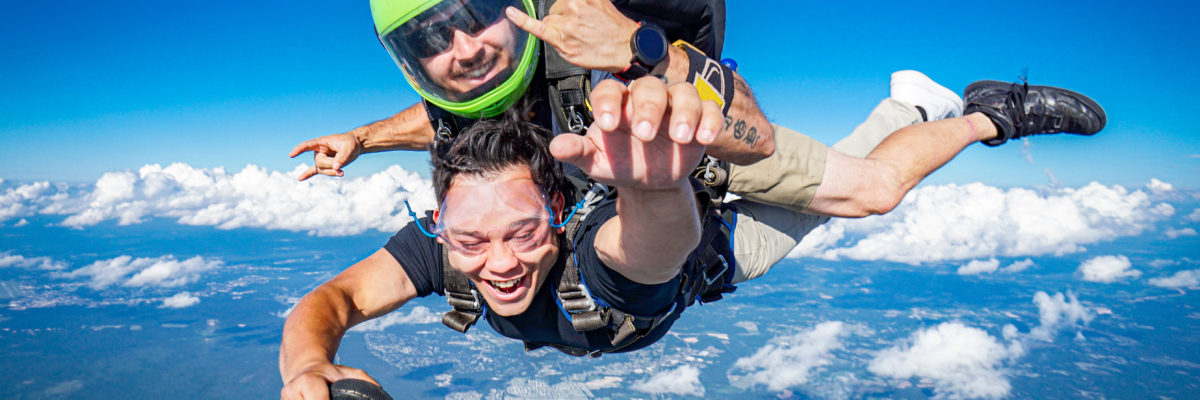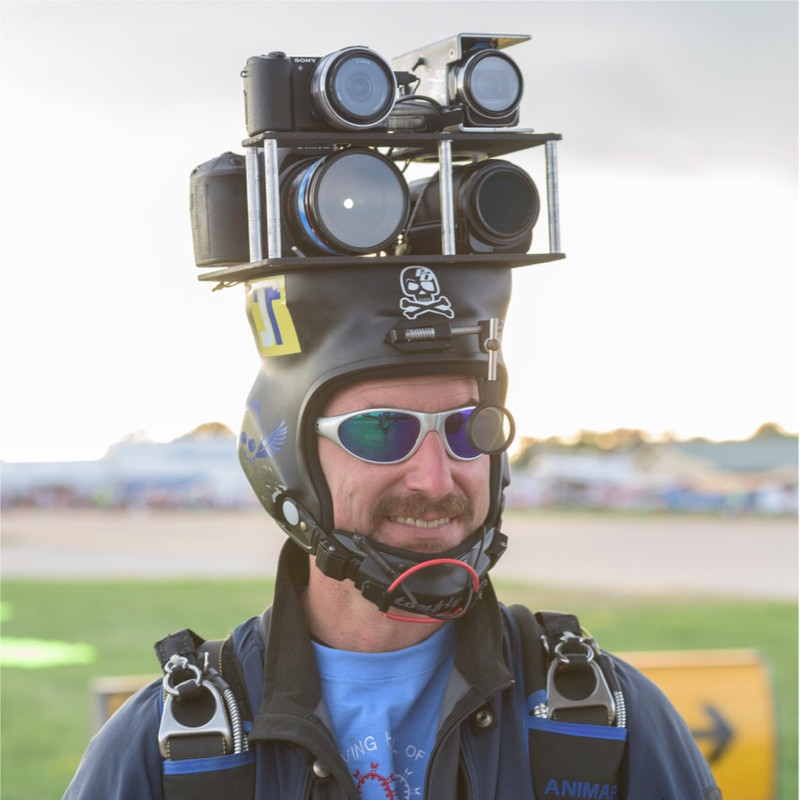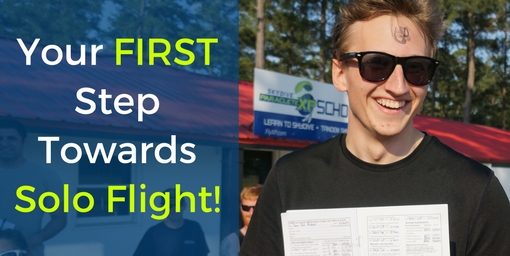
Can I Bring My Own GoPro Skydiving? NO!
Monday, March 17, 2025
- Team FlyXP
- 3/17/25
- 0
- General, Skydiving
Can I wear my own GoPro skydiving? The short answer is no. At least, not until you have 200 skydives under your belt. In this article, we’ll cover why this rule exists and why it’s important for your safety and the safety of those around you.
Why You Can’t Bring Your Own GoPro Skydiving
Bringing your own skydiving GoPro might seem harmless, but it introduces several risks that make it a no-go for newer skydivers. Here’s why:
1. Distraction
One of the biggest risks of having a skydiving camera is that it causes a distraction. You might think that during something as extreme as skydiving, you’d be fully focused on the jump itself. But many newer skydivers have become so preoccupied with “getting the shot” that they forget to pull their parachute – yes, really.
Thankfully, safety measures like Automatic Activation Devices (AADs) are in place to deploy a reserve parachute if needed. But imagine if an AAD wasn’t there – things could go south fast. Skydiving happens quickly, and while things rarely go wrong, if they do, they happen in an instant. Early on, you simply don’t have the awareness to handle additional distractions.
If you’re a student learning to skydive solo, you already have enough to focus on without adding another variable. But even if you’re doing a tandem skydive, your participation is still important. Your job is to stay present, focus on your body position, and fully experience the jump – not fumble with a camera.
2. The Flying Missile Problem
Ever dropped your phone and watched it fall in slow motion? Now imagine that happening at 120 mph from a few miles up. Anything you bring with you on a skydive has the potential to become a high-speed projectile.
A skydiver’s camera that slips out of its mount, breaks free mid-jump, or even a GoPro strapped to your wrist could cause serious issues. Losing control of your arm while wearing a camera or having a GoPro come loose could result in accidentally striking your instructor, another jumper, or even someone on the ground. That’s why we don’t allow unsecured items during a jump; safety always comes first.
3. Liability
Skydiving instructors don’t want to be responsible for your personal equipment. If you lose your GoPro mid-jump, no one’s stopping freefall to go find it. And if it gets damaged? That’s on you. Plus, that whole flying missile and causing injury to others potential. The more experience you have, the better equipped you’ll be to manage your own gear. Until then, it’s best left on the ground.
4. Snag Hazard
Skydiving gear is designed to be as snag-free as possible. Anything extra, like a camera, adds an unnecessary snag risk. If a line or handle gets caught on a camera mount during deployment, that could create serious problems.

What the USPA Says
The United States Parachute Association (USPA) is a not-for-profit organization that creates regulations and guidelines to promote safety and consistency in skydiving. According to the USPA, no skydiver should jump with a camera until they have at least 200 jumps. That rule applies to all types of cameras, including GoPros and cell phones.
As a USPA Group Member dropzone, we follow all USPA rules and recommendations. These safety measures exist for a reason – skydiving is an incredible experience, but it’s also one where risk management is key.
How Do I Record My Skydive?
So, wait, can you record skydiving? Yes! No need to worry about missing out on capturing the moment – we’ve got you covered with our professional video package. Instead of wearing a GoPro on your wrist or helmet, we send a dedicated camera flyer to jump alongside you. This means:
- You get high-quality, full-body footage of you and your instructor.
- A separate jumper films you in freefall – way better than a limited wrist-mounted view.
- Professional videographers ensure your footage looks great (no shaky, awkward angles).
Some dropzones offer wrist-mounted GoPro videos shot by instructors, but it doesn’t capture the full experience. That’s why we stick to our one high-quality video package, providing the best footage possible.
So, while you can’t bring a GoPro skydiving, you’ll still walk away with an epic video of your jump – filmed the right way.
Capture Your Skydive!
While bringing your own GoPro isn’t an option, you can still relive every incredible moment with a video package. Let our expert camera flyers handle the filming so you can focus on what really matters – soaking in the adrenaline, the views, and the once-in-a-lifetime experience of skydiving.
Ready to make the leap? Book your skydive today, and let us capture the adventure for you! Bring your friends and family, there’s plenty of room for spectators. Who knows? Watching you take the plunge might just inspire them to join in on the action!

Without a doubt my absolute favorite place to be when I'm out of school and off work. I came here after I made a tandem skydive and decided I wanted to learn and did my AFF. The instructors and coaches are wonderful. You WILL learn here. Loved jumping with Michael, Randy and Mike so much. Even if the drive is 2 1/2 hours and I'm licensed now, I'll keep coming back.
Jenna Nicole
Copyright © 2025, Skydive Paraclete XP, All Rights Reserved.
DropZone Web Design & Marketing by Beyond Marketing, LLC